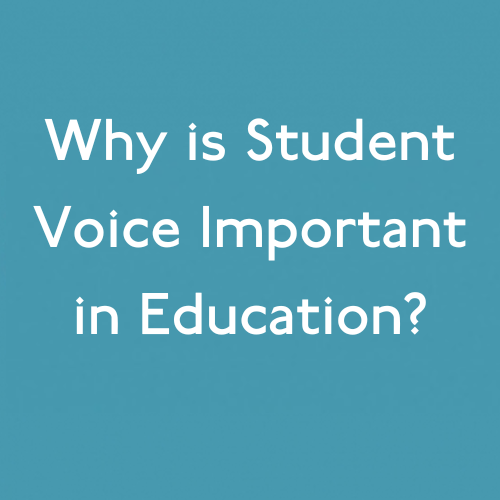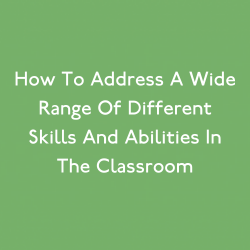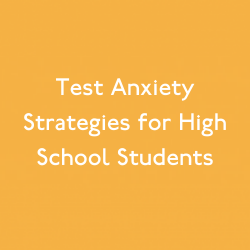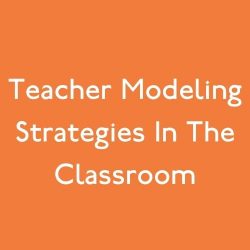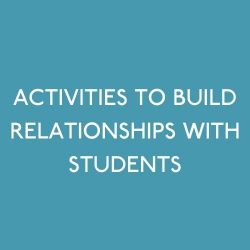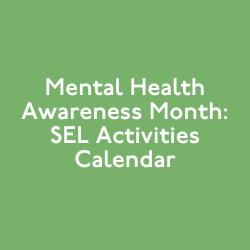The focus of K-12 education is to educate, nurture, and prepare students for independence in adulthood. But for a system that exists to serve students, students often have the least agency in their education. Most students do not get to choose where they go to school, who their teachers are, what classes they take, where they sit in their classrooms, what they eat for lunch, or how they get to and from school. How can we expect students to be prepared for independence if they don’t get to practice asserting independence in their K-12 educational years?
Student voice is important for empowering and engaging students. Students need support to learn how to use their voice, whether to advocate for themselves, express their opinions, or stand up for a friend. Besides the impact on students to empower student voice, teachers can also learn a lot about students when student voice is prioritized in classrooms. It can be easy to make assumptions about students when they do what they are told without a chance to use their own voice, so opening up classroom practices to empower and amplify student voices is an incredibly effective way for teachers to get to know and better understand their students.
See also: Ways to give your students more voice in the classroom.
What is student voice?
Student voice relates to student agency, or giving students a say in their own education. Whether that means allowing students to contribute to the classroom layout, or creating structures that allow students to choose their own topics of student, prioritizing student voice in the classroom means that teachers shift the power dynamic to view students more as partners in their education. One easy way teachers can self-evaluate their practices is to notice how often students literally use their voice in the classroom.
- When are students expressing themselves, their thoughts and ideas?
- Are those moments prompted by the teacher?
- How do students use their voice in your classroom currently?
If the only times students physically speak in class are to answer questions that the teacher poses, perhaps there are more opportunities to explore to invite more student voice in the classroom. Student voice is often connected to choice, which only seems natural as empowering students to use their voice means giving them the ability to make choices in the classroom.
- What topics do they want to study for a research paper?
- How do they want to discuss their ideas?
- What classmates do they want to work with on a group project?
Students can be empowered to both use their voice and make decisions about their educational experience.
What does student voice look like?
A classroom that prioritizes student voice does not look like a traditional classroom with desks in rows and students silently waiting for instruction from the teacher. Student voice looks like autonomy, with students taking charge of their time in the classroom and their own learning. This may look like independent processes at the beginning of class that students use to settle in, focus, and start to engage in the topic of the day.
Student voice in the classroom looks like options, with students able to choose anything from what they learn to how they learn to how they demonstrate their thinking. Teachers can provide a menu of options for students to choose from, or allow open-ended decision-making. Students who are empowered to use their voice are supported in doing that by being provided with options that help them practice exerting autonomy.
Benefits of student choice in the classroom
The benefits of student choice in the classroom extend way beyond the school year. Students are better prepared to make responsible decisions, advocate for themselves, and decide their own course of action when they get to practice using their voice and agency in the classroom throughout their K-12 education. Within the school year, prioritizing student voice creates a classroom of empowered learners who are actively engaged in learning.
Instead of sitting passively and waiting for the teacher to direct the learning experience, students who are supported to use their voice and choice in the classroom are proactive learners, taking initiative to explore new concepts, are often more resilient through failure, and more collaborative with peers. Any teacher knows that one of the best way to prevent behavioral issues in the classroom is to deeply engage students in learning. Student choice and voice is an effective way to design classroom environments that deeply engage students in learning.
The Nation’s Leading SEL Company
Move This World is the leading provider of social emotional learning (SEL) multimedia experiences for students, teachers, and families. Our SEL programs are customized for PreK-12 students and are delivered through short interactive lessons with the goal of empowering students to navigate the rapidly-changing realities of their world – both in the classroom and throughout their lives. The impactful yet simple Move This World SEL curriculum allows educators and families to incorporate Social Emotional Learning into their schedules every day, without planning or prep.
Contact us to learn more about SEL Grants and bringing Social Emotional Learning to your classroom.
Related links:
